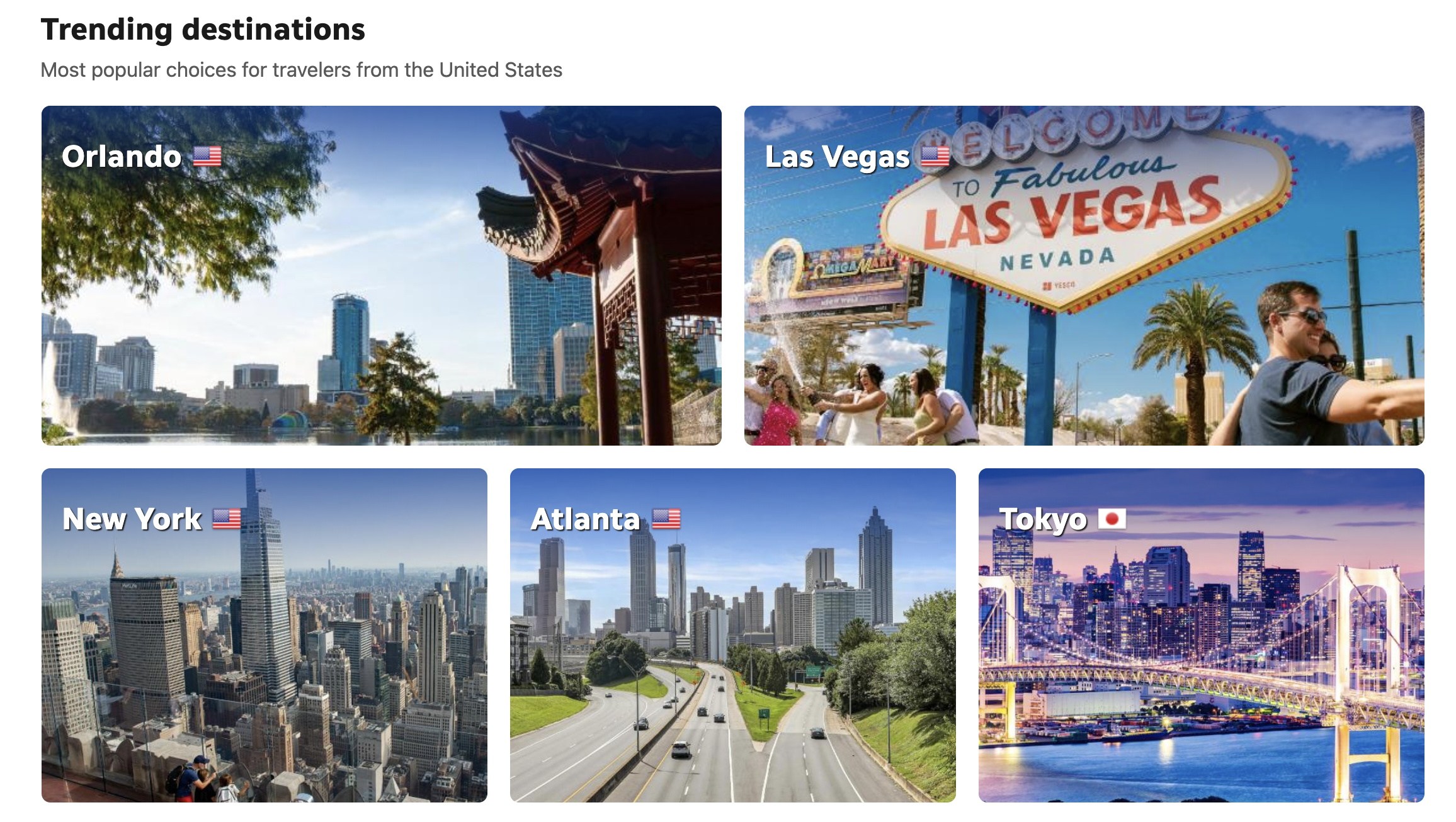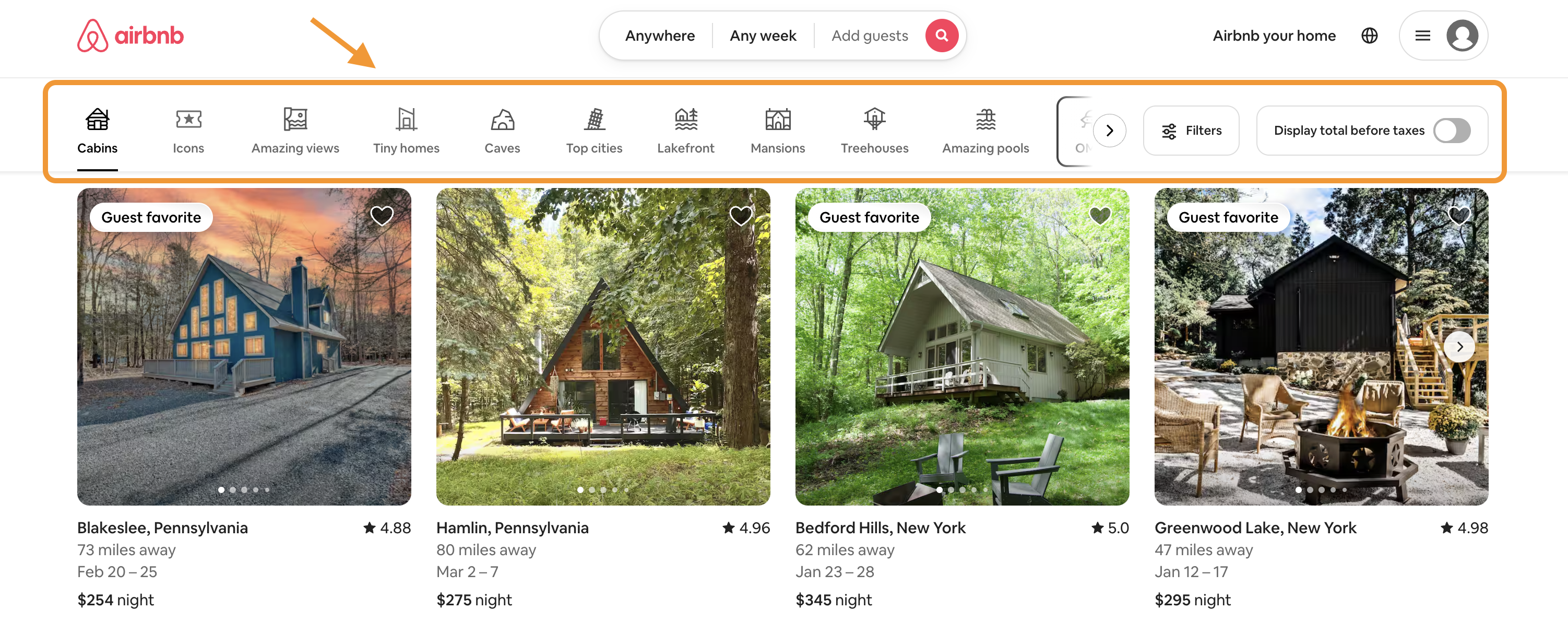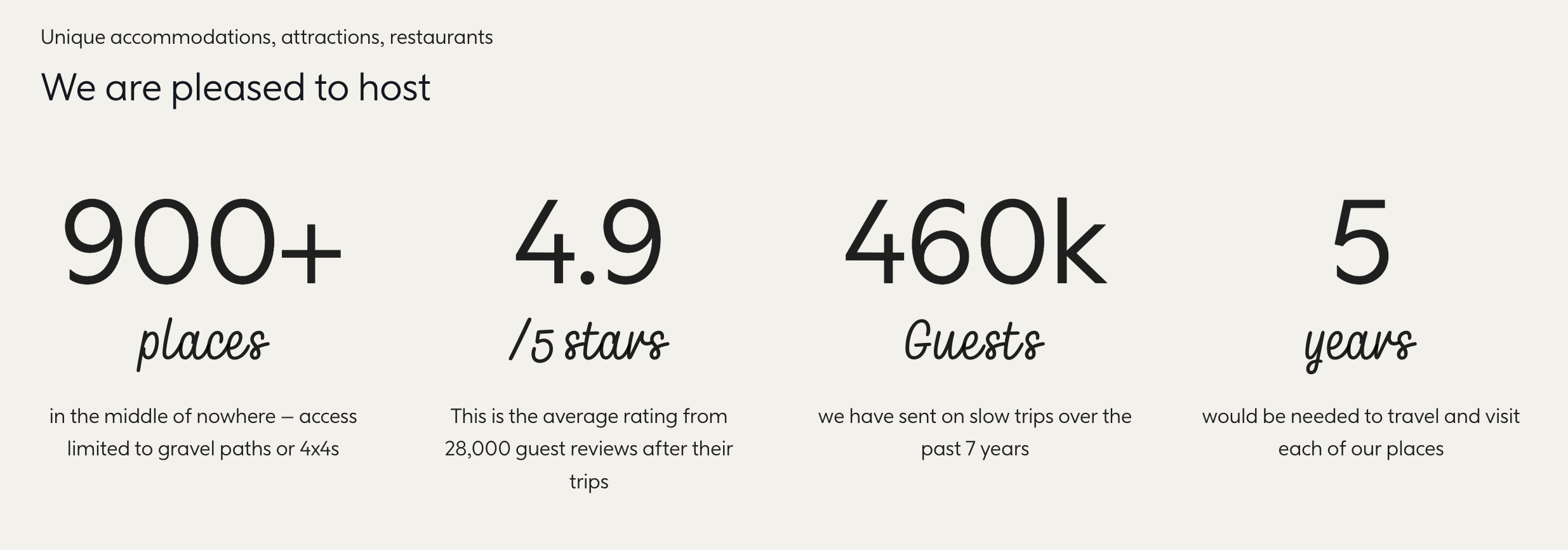Imagine planning your dream vacation. As you browse a travel website, a stunning image of a pristine turquoise lagoon with powder-white sand instantly catches your attention. Next to it runs a promotional countdown timer, while below sits an urgent notice: “only 2 spots left at this price.” This is travel merchandising at work.
While merchandising is commonly linked to e-commerce, travel businesses increasingly adopt these techniques. In this guide, we’ll explore key travel merchandising strategies that drive sales and create competitive advantages. Discover proven approaches to converting website visitors into happy travelers, from travel website layout optimization and FOMO marketing techniques to advanced travel personalization methods.
What is Travel Merchandising?
Travel merchandising encompasses comprehensive strategies for showcasing and selling travel products that help travel companies boost conversion rates and foster lasting customer relationships.
For basic merchandising concepts, check out our article: Merchandising in a Nutshell: Definition, Best Practices, and Real-World Applications. However, merchandising is important in the travel industry because we’re marketing experiences and aspirations rather than tangible products.
Unlike retail merchandising, where customers can physically inspect products, travel merchandising must convince potential travelers to purchase experiences they can’t try beforehand. It requires not just compelling offer presentations but also trust-building strategies and effective doubt-removal techniques.
Consider Bali vacation packages as an example. Effective travel merchandising goes beyond showcasing beautiful beach photographs – it includes interactive destination maps, virtual hotel tours, authentic traveler reviews, and immersive destination videos. It’s about crafting a complete travel narrative that lets potential travelers envision their perfect vacation before booking.
Merchandising in Travel Industry Goals
Effective travel merchandising extends far beyond simply “selling vacation packages.” It’s a comprehensive strategy that should achieve several key objectives:
- Maximizing Sales and Profit Margins: In the travel industry, success isn’t just measured by the number of trips sold but primarily by margin optimization. Strategic offer management helps maximize profit from each vacation package sold.
- Travel Inspiration: Unlike other industries, customers often begin their journey without a specific destination. Quality travel merchandising should showcase travel offers, inspire and educate, and transform vague vacation dreams into concrete bookings.
- Building Trust: Vacation purchases represent one of the largest annual expenditures for most people, making credibility essential. Travel offer presentations must address concerns and build confidence that travelers make the right choice.
- Creating Long-term Customer Relationships: The travel industry thrives on long-term thinking. The goal isn’t just securing a single booking but building lasting relationships that encourage travelers to return for future vacation planning.
Successful travel merchandising is the art of balancing these objectives: increasing current sales while building a loyal, returning customer base.
The 5P Principle in Travel
As we mentioned in our previous article, the 5P principle forms the foundation of effective merchandising. Here’s how it applies to travel marketing:
- Planning: Seasonal analysis and trend monitoring are crucial in travel. Travel businesses must strategically time their first-minute and last-minute offers, determine optimal periods for promoting specific destinations, and effectively plan airline seat and hotel room inventory.
- Positioning: In the travel industry, it means making your travel packages stand out among hundreds of similar offers. Premium vacation packages should be featured prominently on the homepage, while budget travel options can be grouped in dedicated promotional sections.
- Promotion: Implementing travel loyalty programs, travel newsletters, and personalized deal alerts. Time-limited travel discounts with countdown timers are particularly effective in driving travel bookings.
- Pricing: Dynamic travel pricing based on seasonality, flight occupancy, and hotel availability. The strategy between early booking discounts and last-minute travel deals is crucial for maximizing revenue.
- Placement: For online travel platforms, this means strategically positioning travel offers on the website to maximize traveler conversion rates.
8 Travel Merchandising Techniques That Drive Results
1. Personalizing Travel Offers
Travel personalization operates across multiple dimensions and appears at various customer touchpoints. The initial website visit is crucial – displaying tailored content at this stage can significantly boost engagement.
Within seconds of arriving, visitors can see content matched to their interests through elements such as:
- “Inspired by Your Recent Searches” carousel
- “Popular with Similar Travelers” section
- Personalized promotional banners (e.g., “Return to Sunny Greece” for previous visitors)
- Featured offers based on browsing history

But a well-optimized website is just the beginning. Similar personalization mechanisms should extend across other marketing channels, such as email marketing and retargeting ads, where you can showcase:
- Recently viewed hotels
- Destinations similar to previous searches
- Offers matching individual price preferences
- And much more
This comprehensive personalization ensures travelers feel understood and receive relevant recommendations regardless of when and where they interact with your brand.
2. Implementing Smart Travel Search
Picture this scenario: a visitor types “looking for a hotel with a pool in a warm country for February, budget up to $6000” into your search. While a standard search would return an error or request form completion, an intelligent travel search:
- Recognizes purchase intent
- Analyzes price preferences
- Identifies desired amenities
- Suggests destinations matching criteria
Research shows that two-thirds of young travelers don’t have a specific destination in mind. With AI-powered search solutions like Qtravel Search, you can transform this challenge into an opportunity by inspiring them with precisely matched travel offers based on their needs and preferences.
3. Strategic Travel Offer Ranking
Search result ordering is crucial in travel merchandising, significantly impacting customers’ booking decisions.
The Pin Item feature in Qtravel Search exemplifies this technique, allowing travel businesses to pin selected offers at the top of search results based on specific criteria or keywords.
It enables highlighting of:
- Best-selling hotels
- Top-rated vacation packages
- High-margin travel offers
- Promotional travel deals
You can flexibly adjust offer visibility based on current business objectives. For example, as the summer season ends, you can pin Greek last-minute deals at the top while beginning to showcase attractive first-minute winter season offers. It enables smooth sales management and profit maximization throughout the year.
4. Effective Travel Category Pages
Category pages serve as crucial touchpoints in travel searches, where travelers spend significant time comparing options and making booking decisions.
How to effectively organize travel offers? Travel categories should reflect how travelers think. Beyond basic geographical organization, consider different travel needs and styles. Effective travel categories include:
- Family vacations
- All-inclusive resorts
- City breaks
- Exotic destinations

For instance, when a user selects “family vacations,” they should see curated offers featuring:
- Family-friendly hotels
- Nearby water parks
- Children’s Activities
Additionally, a modern travel filter system should enable precise results refinement by key parameters:
- Price range
- Accommodation rating
- Amenities
- Meal plans
- Beach distance
5. Compelling Travel Offer Presentation
A travel offer presentation requires a strategic two-level approach. On category pages and search results, travelers should immediately see key details like price, dates, hotel rating, and main amenities. This enables quick comparison and easier decision-making.
When visitors click on a specific offer, it’s time to engage their imagination fully. Professional sunrise and sunset photography, drone footage showing panoramic views, and virtual hotel tours can create a powerful first visual impression.
It should be complemented by authentic guest reviews and practical local information, building trust in the offer. A well-designed offer page functions like a virtual guided tour – engaging all senses and building pre-travel excitement.
6. FOMO and Social Proof
In travel, where customers often hesitate before making expensive purchases, FOMO (Fear of Missing Out) techniques and social proof can be particularly effective. Countdown timers for promotions, “only 2 rooms left at this price” notifications, and “just booked by another traveler” alerts create a sense of urgency.

Building social proof is equally essential. Displaying the number of people currently viewing a hotel, booking numbers from the past week, or destination popularity effectively supports decision-making. However, authenticity is key—rather than artificially generating scarcity, it’s better to show real availability data and genuine customer reviews. This builds not just purchase urgency but long-term brand trust.

7. Cross-Selling and Up-Selling Strategies
The travel industry offers numerous opportunities to increase cart value. After selecting their main trip, travelers are more likely to purchase additional services that enhance their vacation experience.
Effective travel cross-selling involves suggesting complementary services at the right moment. When a customer books a trip to Greece, offering car rental options for island exploration or nearby island tour packages makes sense. Up-selling might include offering sea-view room upgrades or private transfer services instead of shuttle buses.

The key lies in recommendation relevance and natural fit with the main booking. Additional services should genuinely enhance the travel experience rather than appear as aggressive sales tactics. Well-planned cross-selling not only increases revenue but also improves overall customer satisfaction.
8. Website Optimization and Performance Monitoring
In the travel industry, sales success largely depends on cross-device website performance and practical user behavior analysis. With approximately 35% of travel bookings made on mobile devices, mobile-first design has become essential.
Effective optimization requires continuous testing. A/B testing is particularly crucial for identifying elements that most impact conversion. These tests help answer questions like:
- Does a large hero image perform better than a carousel of smaller images?
- What’s the most effective way to display pricing?
- Should promotional timers appear at the top or bottom of the page? Such data enables you to make changes to your website based on evidence rather than intuition.
Advanced analytics also play a vital role. User journey tracking reveals common booking abandonment points, most-used filters, and most engaging images. This data not only helps optimize the website but also improves merchandising strategy and content personalization for different customer segments.
Maximize Your Travel Business with Effective Merchandising
As you can see, successful travel merchandising is a comprehensive strategy combining personalization, intelligent search, and engaging content presentation. When properly implemented, travel merchandising techniques not only boost sales but help build lasting customer relationships, transforming casual visitors into loyal travelers.
If you want to discover how to leverage merchandising techniques in your travel business, try Qtravel Search Demo. You’ll see firsthand how features like Pin Item, search result personalization, and natural language search can help you stand out in the market and increase conversion rates.
